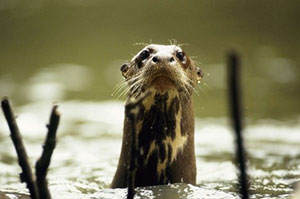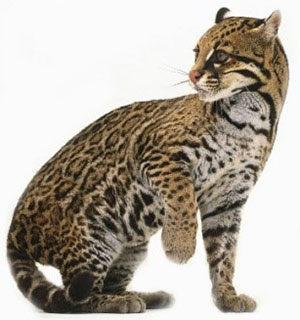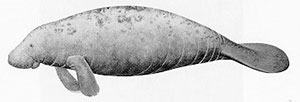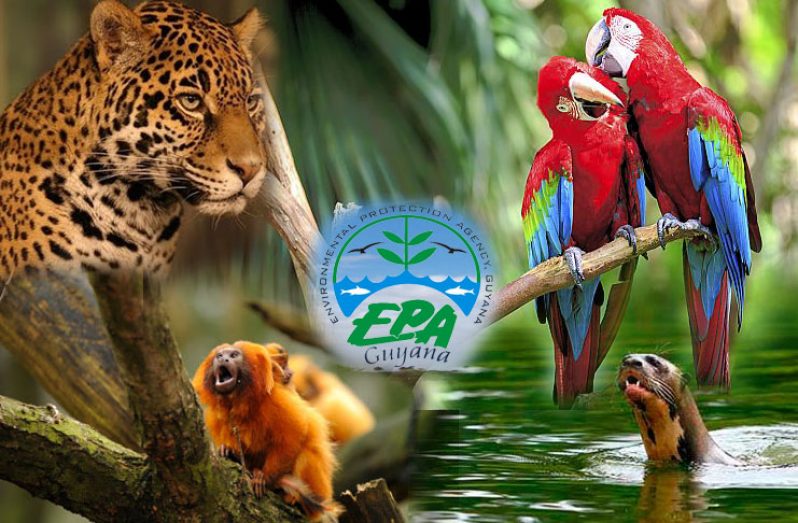Most of you can easily name at least five mammals that are native to our country – after all you live here! But can you just as easily name five mammals that are protected by law? Some of the mammals that live in the wild, that is, in the forests, savannahs and rivers are protected by international agreement, local law, or both. Guyana has signed on to the Convention on International Trade of Endangered Species in Wild Fauna and Flora (CITES), this is an agreement between countries to control the trade in wild species.
CITES also prohibits trade in some species, and among them are some mammals found living in the wild in Guyana. Protected species – mammals, other classes of vertebrates and plants, are those considered to be endangered – meaning that they are prime targets for capture and trade which results in a rapid decline in their numbers in the wild. If trade in such species were allowed to continue, then they risk disappearing from the wild.
Benefits of Wildlife Protection
By declaring endangered species as being protected, Guyana will be fulfilling its responsibility under CITES. Also, protected species will be allowed to revive their populations and there will be a higher possibility of them being seen by visitors and tourists. This will boost ecotourism and bring economic benefits to the country. Further, protected species may possess the ability to make chemical compounds which may be critical to new treatments for diseases.
Nature has designed all pieces of the natural food chain and ecosystems – forests, savannah, rivers, etc. – to fit into a whole that functions well. As such, all pieces of the “puzzle” are needed for there to be enough, water, habitats, food etc. for living things including people. Endangered species are a critical pieces of the puzzle and thus it is important to protect them to maintain the delicate balance of nature.
Some species of wildlife are indicators of the quality of our environment. The presence or absence of indicator species in an ecosystem can signal a change in conditions there; this could help to diagnose the health of the particular ecosystem. For example, plants or lichens sensitive to heavy metals or acids in rain may be indicators of air pollution. Some species, whether a plant or animal play a unique and crucial role in the way an ecosystem functions and are known as keystone species. Without keystone species, the ecosystem would be dramatically different or cease to exist altogether.
Our country has taken big steps to ensure the legal protection of its rich biodiversity, including the dedication of some 371,000 hectares of forests in 1989, to develop a model of true sustainability, under the name the Iwokrama International Center for Rainforest Conservation and Development. The passage of key pieces of legislation including the Protected Areas Act in 2011, and the Wildlife Management and Conservation Regulations 2013, and the recent Wildlife Act, speak volumes of the importance being placed on our national patrimony.
Protected Mammals
It is quite likely, that on your list of five mammals of Guyana, there is at least one that is legally protected. Some of our protected mammals are well known perhaps because of their distinct characteristics. Unfortunately the very reasons that make wildlife attractive is what leads to them being overhunted for trade. Here are some facts about a few mammals that are under legal protection in Guyana.
GIANT RIVER OTTER (Pteronurabrasiliensis) 
COMMON NAME: ‘THE RIVER WOLF’
Belongs to the Mustelidae family – same as the weasel but is the largest member – can reach up to 6 feet (1.8m) in length.
Every otter has a different pattern on its chest – as unique as a fingerprint.
Has a carnivorous diet consisting of fish, consuming up to 3-4 kg of food per day.
Has been hunted extensively for its pelt (skin) and are among the rarest in the world.
Today, is threatened in some parts of the world by loss of its habitat due to human activities.
THE OCELOT(Leopardusparadalis)
COMMON NAME – ‘DWARF LEOPARD’ OR ‘PAINTED LEOPARD’
Like the otter, each pattern on the ocelot’s fur is unique.
Ocelots are twice the size of the average housecat, and measures up to 73-100 cm, weighing 7-15.5 kg (males) and 6.6-11.3 kg (females).
Their diet usually includes frogs, iguanas, crabs, opossums, and rabbits.
Ocelots are extremely adaptable and can be found in a variety of habitats including tropical rainforests, grasslands, marshes, and as far as the Andes Mountains.
Ocelots are hunted for their beautiful coat and also as exotic pets.
THE WEST INDIAN MANATEE(Trichechusmanatus)
COMMON NAME: AKA ‘SEA COW’
o Has no hind limbs.
o While swimming, manatees take in air every 3-4 minutes and when resting, can stay underwater for up to 15 minutes.
o Has no natural enemies and lives up to 60 – 70 years.
o A manatee consumes up to 0.5 kg (1lb) of food daily.
o Manatees are hunted for their meat, fat and hide.
Now that you know a bit more about these three protected mammals, try to find out about other protected mammals in Guyana. Challenge yourself to learn about protected plants, birds, amphibians and reptiles. Get to know your wildlife!
For a complete list of protected species in Guyana, have a look at the Wildlife Management and Conservation Regulations that can be found on the Agency’s website at www.epaguyana.org.
http://lntreasures.com/guyana.html
https://www.fws.gov/midwest/lawenforcement/protectwildlife.htm
http://eol.org/info/465



.jpg)











